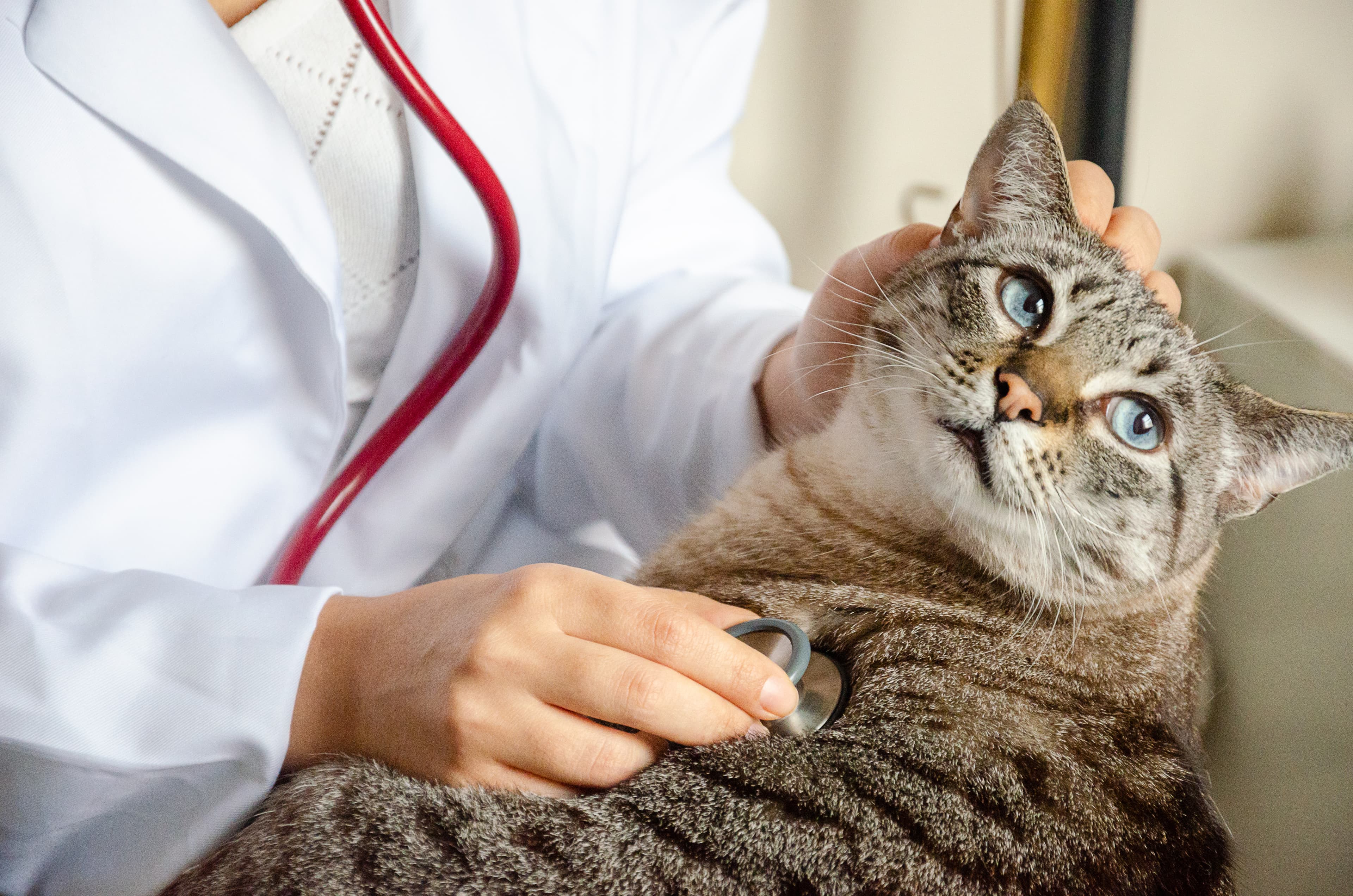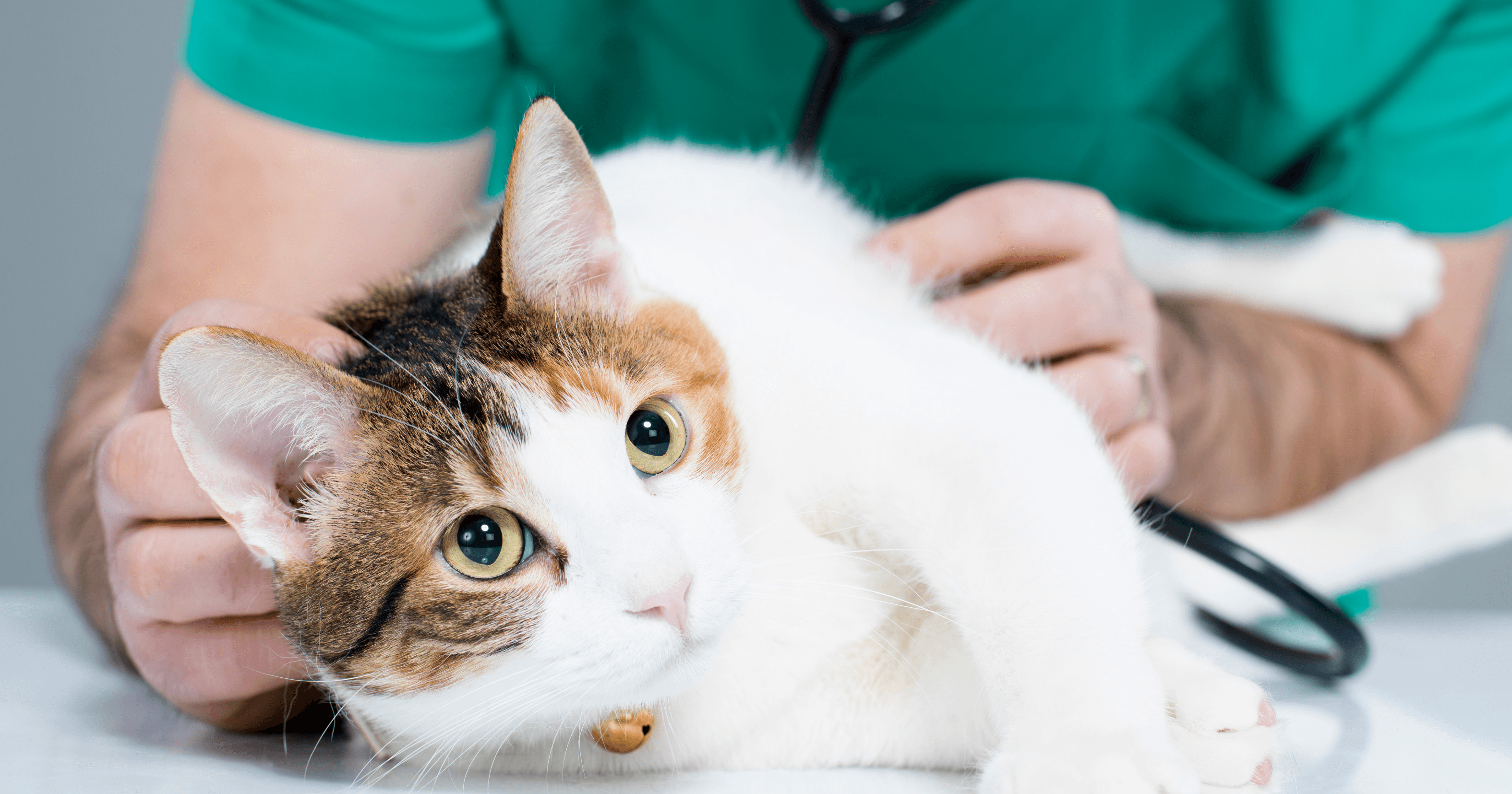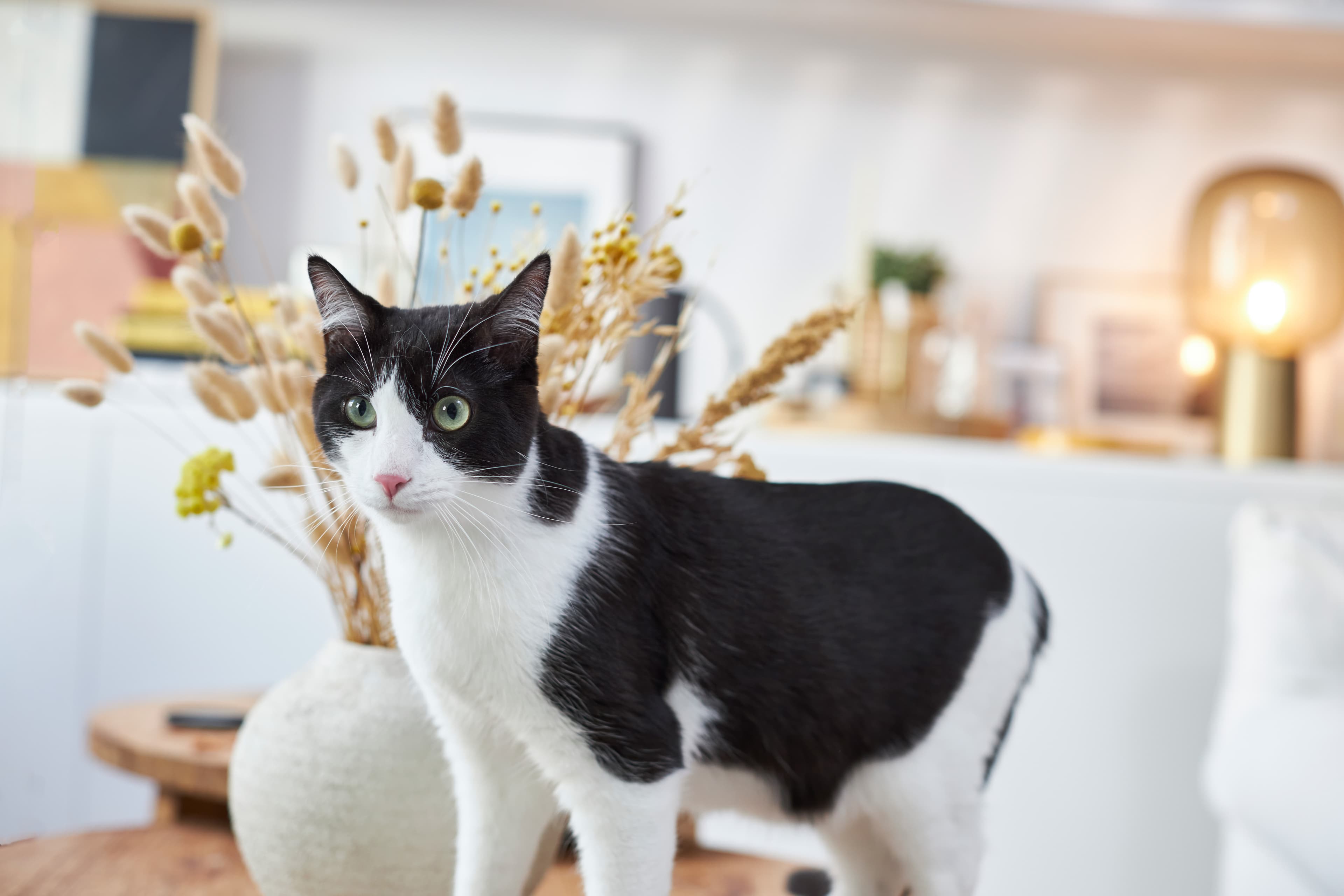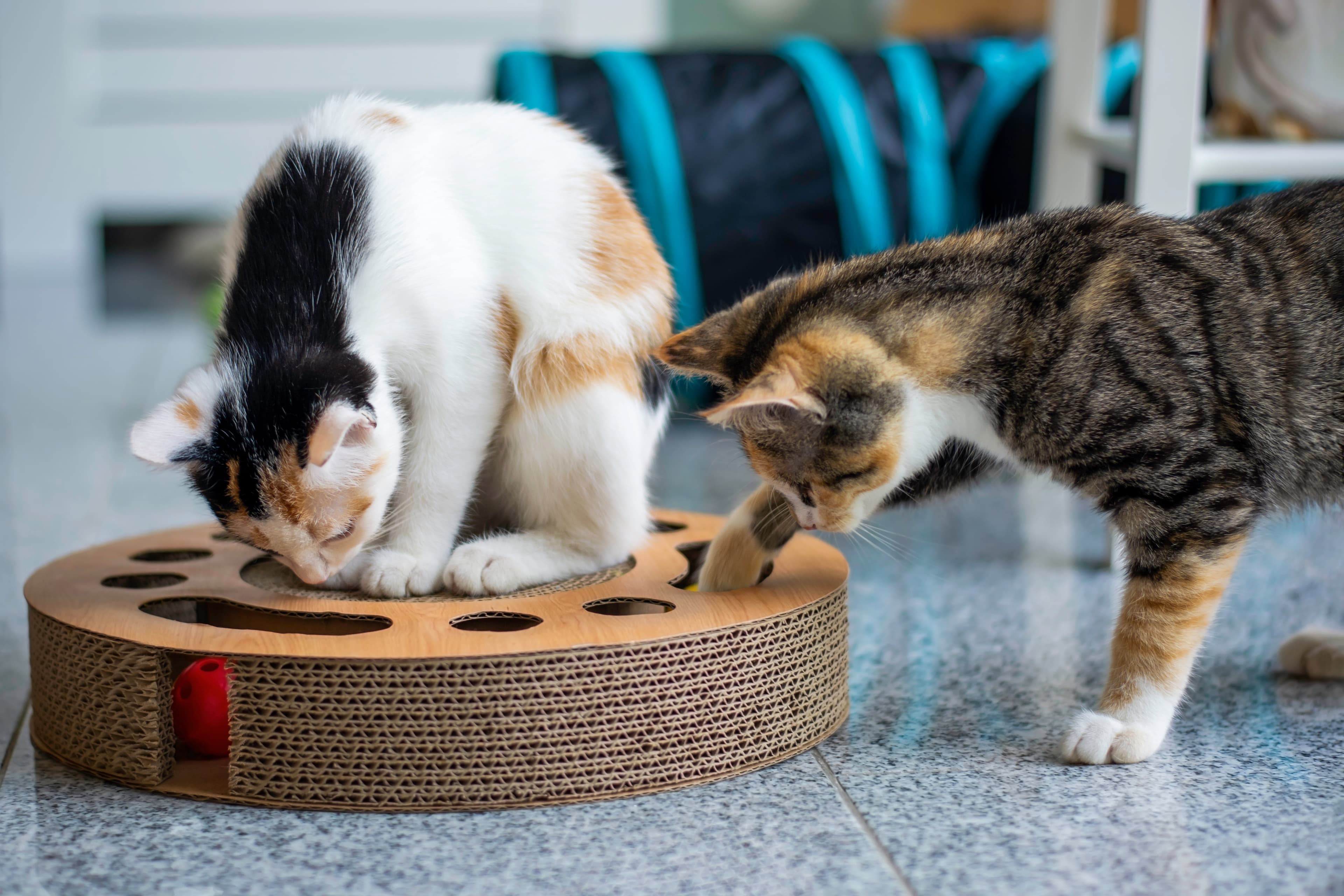How to train your cat for the vet visit
There are many steps during a veterinary visit that you can practice doing with your cat. It can be anything from stepping on the scale to taking a blood sample and everything in between. The more things you practice beforehand, the less stress and fear your cat will feel during the visit and the more pleasant it will be.
When you're training your cat, it's good to think about the things that might happen during a visit to the vet. What kind of medical problems does your cat have and do you need to train your cat on something specific that it doesn't like. If your cat has ear problems, for example, it is good to practice being able to look down into the ears in a calm and pleasant way.
Unlike dogs, cats are usually not as socialized in different environments and used to meeting new people. It's natural to keep cats at home and that's where they are safe. This means that it's a big change for the cat when it needs to travel to a new environment with new smells and unfamiliar people. This means that we need to do everything we can to make the cat feel safe in this situation. And part of that is training the cat for different tasks so it recognizes the situation.
Some things that are always good to practice are general handling, wearing a cone, and traveling in the carrier.
The transport carrier
The trip to the vet starts at home and if your cat isn't comfortable in its carrier, that's where the training needs to start. Have the cage out and make it a cozy nook. However, if your cat still finds it scary or has previous negative experiences with it, you need to train your cat to be ok in it. You do this by letting your cat explore the cage and as soon as your cat walks towards it, looks at it or takes a step into it (depending on how uncomfortable your cat finds it), you reward it with a treat, dry food or some play, again depending on what your cat thinks is a good reward.
Try not to lure the cat to the cage if it finds it unpleasant as there is a risk that the cat will overstep its boundaries to get the treat and become even more scared. Instead, throw the treat away from the cage. This also gives the cat a chance to come back and repeat the behavior of approaching the cage and getting a new reward. You need to do this training until the cat enters the cage on its own and finds it ok to be in even if you close the door and for a longer period of time.
The examination
At the vet's, the cat will undergo an examination. This often involves the vet looking into the cat's eyes, mouth, squeezing the abdomen, touching the legs and paws and listening to the heart. For specific problems such as lameness or ear problems, those specific areas will of course be examined more thoroughly.
To practice this, it's important to start in a calm way and follow the cat's movements at all times. If the cat won't even stay still on a table, that's what you need to start practicing. You can touch the different parts of the body and then reward them with a treat. If you notice that there is some part of the body that the cat finds more uncomfortable, it is important to train a little extra there, but it is important not to go beyond the cat's limits so the cat becomes afraid or uncomfortable, as you then risk that the cat becomes more difficult to examine.
When it comes to looking in the eyes and mouth, it can be a little uncomfortable as the cat's head is held a little and the veterinarian sometimes wants to open the mouth so it can be good to practice this as well.
Taking the temperature is also often part of the examination. This can be difficult to practice at home in a good way, but it is possible to practice lightly holding the cat and lifting the tail. It is also good to take the temperature of the cat at home so you know approximately what your own cat's normal temperature is.
Strange objects
During the examination, the cat will be examined with various objects that are strange to the cat. It can be the chip reader that should be stroked over the neck and beeps when it finds the chip or the stethoscope that is a bit cold and should be pressed against the chest. This is also a good thing to practice at home. You don't need to have a chip reader or stethoscope to practice this, but use your phone as a chip reader and a spoon or something else as a stethoscope.
Approach the object slowly, let the cat sniff it if it wants to, and place it gently against the body part in question. Reward with a treat when you're done.
Blood tests
A blood sample is often taken to rule out certain diseases. The blood sample is often taken on the front legs or neck. This can be difficult to practice at home, but what you can practice is to hold the cat, the sound of the shaver, to put the stasis around the elbow and to wet a part of the leg.
For a blood test, the cat needs to stay still for a long time. It is good to practice this. The most important thing to remember is that cats tend to resist the more you hold them. This means that we practice holding loosely and softly but the cat is still relatively still. It can be helpful to keep one hand softly around the cat's body and one softly under the chin. Also, remember to practice this on a table with the cat facing away from you as this is often how a blood sample is taken. Don't forget to practice for short periods of time so your cat doesn't get bored and to reward when your cat is still.
Some cats react very much to the sound of the shaver so it can be good to train this. You can do this just by turning on one you have at home, or pulling up a sound on your phone. Start by turning it on far away from the cat so it can get used to the sound. When you turn it off, reward the cat with a treat as it can associate the sound with treats and get a positive expectation when it hears the sound.
To take a blood sample, you need to stasis the paw a little. This is done by clamping a rubber hose above the elbow. This can be practiced with a regular hair tie or a rubber band. It is important not to tighten it too much, but thread the cord over the paw like a large ring and pull it a little to the side when it is at the top of the leg. Do not twist it several times around the leg. Here we also train at the cat's pace and are careful that it does not find it unpleasant, and of course we reward the cat for participating in the training.
The last step before pricking for a blood sample is to wet the area. This can be practiced just by soaking a piece of cotton or paper towel with water and dragging it along the front of the leg and rewarding afterwards.
X-rays
Some medical conditions require an X-ray. How your cat should be positioned depends on the location of the problem, but often they lie on their side and back. This can be good to practice as it is often a difficult position for the cat and the procedure requires the cat to be still in order to get the best possible images.
You can train your cat to lie flat on its side by luring it with treats or gently laying it down if it is ok with it. Give plenty of rewards and be sure to practice on both sides. Lying on your back can be a little trickier. Here we need to come in and help as it is difficult to lie completely straight on the spine on a hard surface. We can help the cat onto its back and train it to lie straight. Make sure not to go too fast and that the cat does not find it uncomfortable, as you risk making it even more difficult for the cat during the visit.
The cone
If your cat has undergone a procedure at the vet, they will often be given a cone to prevent them from licking the exposed area. This is something that can be very difficult if you have not practiced it before. You can practice this by having the cat put its head in the cone itself. You can start with a paper cone or similar and reward the cat inside the cone when it curiously sticks its head in. The next step is to train the cat to wear the cone for a longer period of time.
An important thing to keep in mind after the visit if your cat is wearing a cone is that you may need to remove it for the cat to eat or to wash other parts of the body than the exposed area.
Why is it important to train for the visit?
You might think it's unnecessary to train for something that happens maybe once a year or less, but you can see that just one veterinary visit that is perceived negatively can have a huge impact on the cat and cause lifelong fears. A positive side effect of training is also that it strengthens your relationship with your cat. And it's fun!






